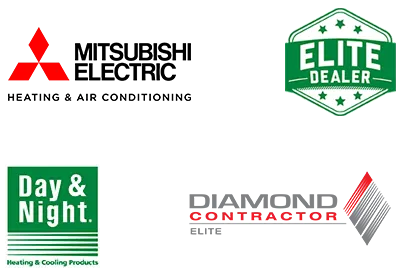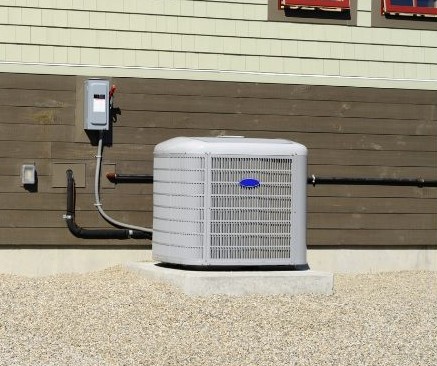
When your HVAC system starts to show signs of breaking down or is past its recommended 10-15-year lifespan, you’ll need to consider an HVAC replacement. Though you might be worried a new HVAC unit isn’t worth the costs, it can actually save you money in the long run. As you decide whether an HVAC replacement is worth the investment, find out more about the top three ways new HVAC units can save you money.
The longer an HVAC system runs, the more likely it is to need repairs and maintenance. While regular maintenance is recommended regardless of age, constantly having to repair your HVAC system isn’t, and it can be a sign your HVAC system needs a replacement. Since HVAC systems past the 10 to 15-year mark often need far more repairs, the repair costs will often continue to spiral and put a strain on your budget.
In contrast to old systems, new systems don’t usually need regular repairs, meaning your annual repair bills will be much lower. When they need an unexpected repair early on in their life, the repair will often be covered by a warranty and won’t require you to pay a dime.
New high-efficiency HVAC units will almost always be more energy-efficient compared to older units. Whether it’s due to new design features, smart controls, or higher SEER ratings appropriate for your home’s size, new systems will use energy more efficiently than older ones. In fact, new Energy Star-rated HVAC units can save you up to 20% on your cooling and heating costs.
Newer models also won’t have energy inefficiency issues due to wear and tear. While older systems struggle to maintain peak energy efficiency because of wear on key systems, new models will provide optimal performance. As a result, the new HVAC system will be far more energy-efficient than your older model and save you money on your monthly energy bills. If you don’t already have a smart thermostat, you might want to invest in one to make your HVAC system even more energy efficient.
New HVAC units can increase the value of your home, making them a good choice for homeowners who plan to sell their homes in the near future. Since new HVAC systems provide more effective and energy-efficient heating and cooling performance, they add value to buyers and can increase the price of your home.
Home buyers are also more likely to pay for a home with a new HVAC system due to the convenience of it, as it means they won’t have to deal with repair or replacement services any time soon. Due to all the ways HVAC systems add value and make your home more appealing, they can help put more money in your pocket when you decide to sell your home.
If you’re looking for HVAC replacement services near you in Vacaville, Novato, or the surrounding areas, turn to Peter Levi. When you partner with us for HVAC replacement services, we’ll recommend the most efficient models for your home, remove your old unit, and install the new HVAC system. You can also sign up for Lucky’s Comfort Club, an annual maintenance contract that ensures you receive regular maintenance and inspections of your home’s HVAC system. Additionally, we offer several coupons that can help you save money on our services.
Learn more about our HVAC installation and replacement services today. If you have any questions or want to schedule an appointment, please fill out our online form or call us at 800-605-5713.
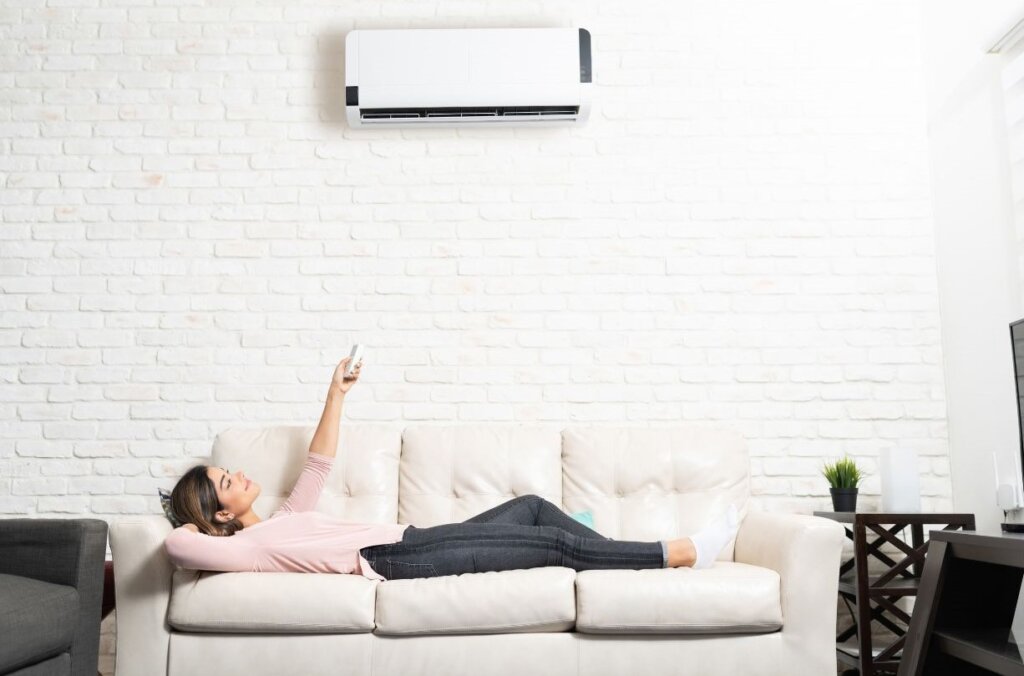
Your HVAC system is one of the most crucial parts of your home, and it’s important to make informed decisions about how you go about replacing or repairing it. While traditional forced-air setups have been the standard for many years in HVAC systems, ductless systems—also known as "mini-splits"—have recently been growing in popularity. Since these systems don’t need ducts to provide warm or cool air to homes, sheds, and individual rooms, they’re often a smart investment.
Mini-splits are a two-part system. There is a ventilation unit installed inside of your home—usually towards the ceiling—and an outdoor unit that regulates the temperature of the air it is absorbing. Cold air has the heat extracted from it in the outdoor unit, and warm air is cooled, creating an arrangement that provides both air conditioning and heat to keep your home comfortable no matter what time of year it is.
Unlike standard central air systems that need ducts to distribute air through a home, mini-splits are stand-alone units that don’t require ducts. As a result, they are easily installed in homes or rooms without ductwork. For example, if you have a work shed unattached to your home’s central air system, a heat pump can provide cool or warm air to your shed all year long.
As you consider whether a mini-split cooling and heating system is right for you, take a moment to review the top four benefits of heat pumps below:
Heating and cooling bills can add up over time, and this is especially true for HVAC systems that are over 10 years old and in need of replacement. If you’ve noticed that your utility bills have been getting higher and higher over the past few months and there haven’t been any repairs needed, it’s probably time to consider a standard HVAC or mini-split system replacement.
Air that travels through the ductwork in a traditional system will lose a substantial amount of heat. As your HVAC works to make up for the loss in temperature, it will consume more energy, and more energy usage means higher monthly bills for your household. With a ductless heating system, there is no maze of vents for the air to travel through, as it is blown directly into whichever room the mini-split has been installed in!
Ductless heat pumps can also save you money in the long run because they use energy more efficiently than central air. They also tend to have a longer lifespan than a traditional forced air system. If properly taken care of, a ductless heat pump can last up to 25 years, meaning you can save money on replacement costs.
Temperature regulation throughout your home can be a tricky balance. All homes are different, and while it may be cold in one part of the house, another room may not need much heating throughout the year. With a traditional HVAC system, when you need to heat up one room, you end up heating the entire house, regardless of occupancy.
Ductless heat pumps solve this potential issue by giving you the freedom to decide which areas of your home to heat or cool. Do you like to stay warm in the living room but enjoy sleeping in a cooler bedroom? That type of variation is easy to achieve with a multi-unit ductless setup over a traditional HVAC configuration.
You’ll also save money by not unnecessarily heating or cooling the parts of your home that aren’t in use. Additionally, these units can be added to stand-alone structures or garages that don’t have ductwork, making them an excellent complement to a home with central air.
If you’re building a home or need to replace your current HVAC system, there may be a need to install new ductwork. These installations can be costly, unsightly, time-consuming, and stressful for homeowners.
Ease of installation is one of the driving factors in ductless heat pump’s rise in popularity. Compared to the extensive labor required in either installing ductwork for the first time or working on existing ductwork in your home, setting up a ductless heating system can be a less invasive project.
Over time, traditional HVAC systems with ductwork can build up dust, mold, and other allergens, potentially compromising the air quality of your home. If you and your family are particularly sensitive to airborne allergens, this can mean a lot of uncomfortable allergy seasons, and getting your ductwork cleaned can be a hassle and expensive.
A ductless heat pump system solves the air quality issues that a traditional setup may cause through simplicity and ease of cleaning. As long as the filtration systems in your ductless heat pump are checked every month, you can rest easy knowing that your household is breathing clean, high-quality air!
If you’re looking for ductless heating system replacement or installation services in Novato, Vacaville, or the surrounding Northern California area, choose Peter Levi Plumbing, Cooling, Heating and Drains. When you turn to us for a heat pump repair, replacement, or installation service, you can expect high-quality workmanship and customer service. We also charge by the job, so you’ll always know how much you’re paying upfront. Say goodbye to hidden charges and hello to honest, reliable HVAC service by one of our knowledgeable technicians. You can also review our coupons to save even more on our services.
Learn more about our ductless heating services today. If you have any questions or want to schedule an appointment, please fill out our online form or call us at 800-605-5713.
Your furnace is the unsung hero when it comes to keeping your home cozy during the chilly months. But like any hardworking hero, it needs a little TLC to perform at its best. At Peter Levi, we understand the importance of maintaining your furnace, so we've put together this comprehensive furnace maintenance checklist. Follow these steps to ensure your furnace stays efficient, reliable, and safe all winter.
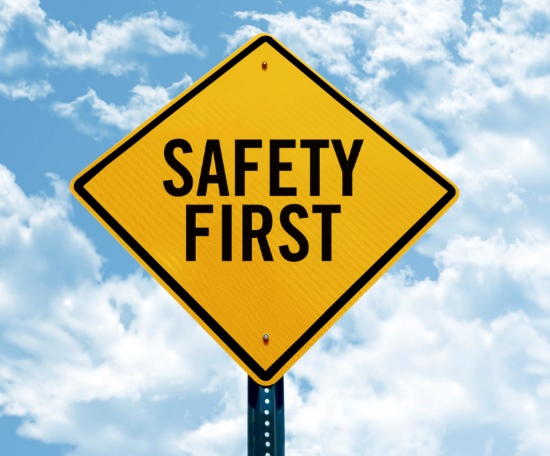
Safety should always come first. Before you start any maintenance, turn off the power to your furnace. You can usually find the power switch on or near the unit. Safety should also include checking for any unusual smells or signs of gas leaks. If you detect a gas odor, leave your home immediately and call your gas company.
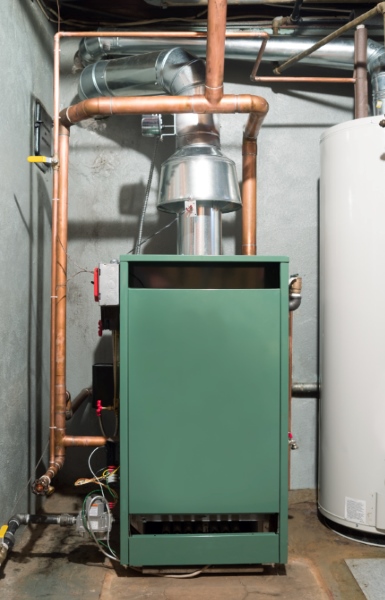
Clear the area around your furnace of any clutter, debris, or flammable materials. Make sure there are no obstructions in the vents or around the intake and exhaust pipes. This step ensures proper airflow and reduces fire hazards.
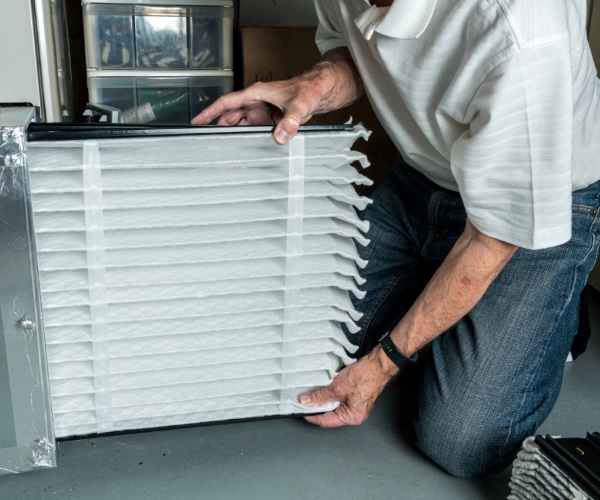
A dirty air filter can cause your furnace to work harder and less efficiently. We recommend checking and replacing your air filter every one to three months, depending on usage. A clean filter promotes better air quality and reduces strain on your HVAC system.
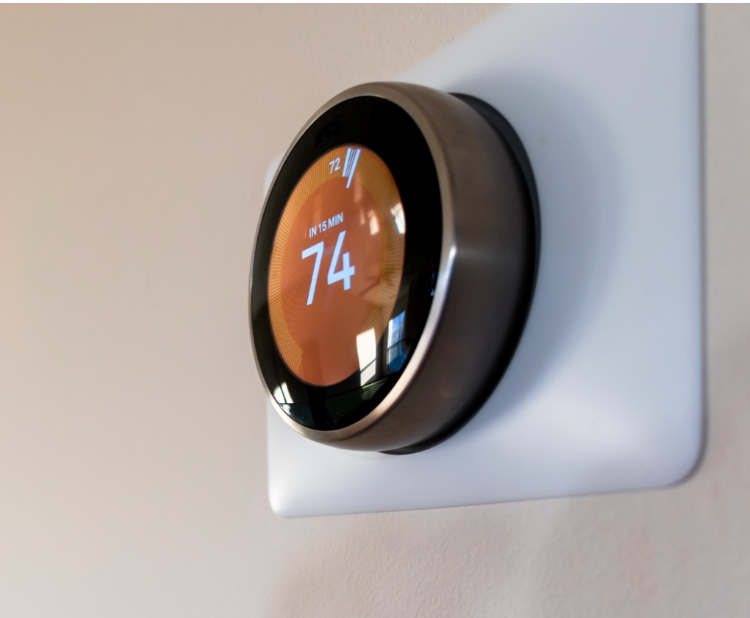
Ensure your thermostat is working correctly. Test it by setting it to a higher temperature than the current room temperature. You should hear the furnace kick in within a few seconds. If it doesn't, you might need to replace the batteries or call in a professional for thermostat troubleshooting.
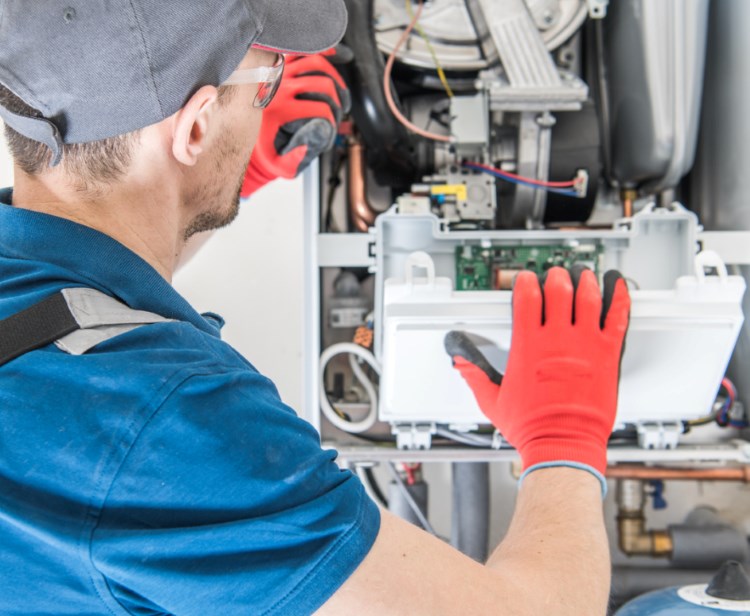
While regular homeowner maintenance can help, there's no substitute for a professional tune-up. Schedule an annual furnace inspection and maintenance appointment with a qualified Peter Levi Home Services technician. During this visit, our experts will:
By scheduling a professional tune-up, you'll have peace of mind knowing that your furnace is in excellent working condition, maximizing its efficiency and lifespan.
Regular furnace maintenance is essential for a warm, safe, and energy-efficient home. By following this checklist from Peter Levi and scheduling a professional tune-up, you can help prolong the life of your furnace and avoid unexpected breakdowns during the winter season. If you ever feel uncomfortable performing any of these tasks yourself or encounter issues beyond your expertise, don't hesitate to contact our experienced technicians. We're here to keep your home comfortable and worry-free year-round. Stay warm and cozy!
Wondering if we can service your home? Check out our service areas here.
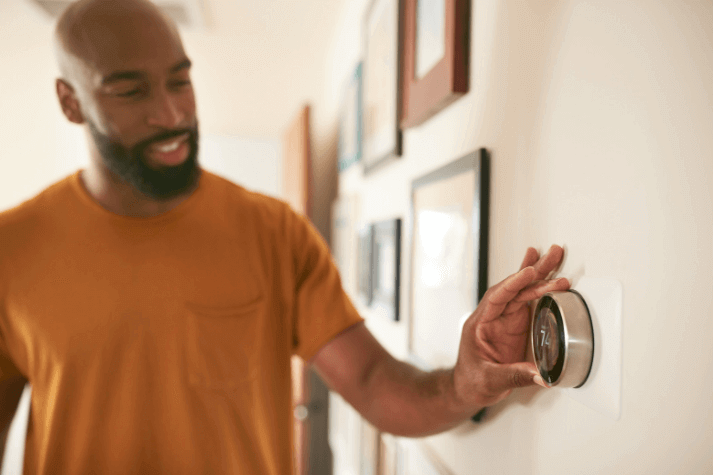
Your home’s thermostat is one of the most important components of your HVAC system, as it measures and controls your home’s temperature. When you have an inaccurate thermostat, your HVAC system won’t generate enough cool or hot air to match your setting. Fortunately, knowing the five main signs of an inaccurate thermostat can help you get ahead of the problem and solve it before it impacts your quality of life.
The most obvious sign that you have an inaccurate thermostat is if your home feels colder or warmer than the temperature you’ve set. For example, if you’ve set your thermostat to 70 degrees, but you’re sweating indoors and your home feels like it’s in the 80s, your thermostat likely has an issue.
While you can usually tell if a thermostat is inaccurate based on how a room feels, you could also compare your thermostat’s reading to a separate portable thermostat’s reading. If the two thermostats show different temperatures, an HVAC technician will need to inspect your thermostat to find out what’s causing the inaccurate thermostat reading.
If your thermostat is installed near a place in your home where the temperature consistently swings, your thermostat’s reading is likely off. For instance, a thermostat near a door will likely experience various temperature swings as people enter and exit your home. A thermostat exposed to direct sunlight can also be affected, as the sunlight can make the thermostat believe your home is warmer than it actually is.
Typically, this issue can be solved by installing the thermostat in a new location. However, if your home isn’t properly zoned, you could also need home zoning services to prevent temperature fluctuations.
Another sign that you have an inaccurate thermostat is if you’re still using a mercury-based thermostat that’s not level. These older thermostats are usually installed in older homes and need to stay level to provide an accurate reading.
If you have one of these thermostats and it’s not in a level position, you’ll need to adjust it back to a level position to get an accurate reading. However, it’s usually best to replace the thermostat and invest in programmable thermostat installation services to receive the convenience and energy-saving benefits of modern thermostats.
Modern thermostats rely on sensors to detect your home’s temperature and provide an accurate reading. When these sensors are dirty or damaged, your thermostat can’t properly determine the correct temperature. As a result, a visibly damaged or dirty sensor is a sign you have an inaccurate thermostat. While you can fix a dirty sensor by cleaning the inside of your thermostat and recalibrating it afterward, you’ll need an HVAC professional to repair a damaged sensor.
Thermostats usually have a life expectancy of about ten years. If you have an old thermostat past its expected lifespan, it could be providing inaccurate readings. Instead of repairing an old thermostat, it’s often better to replace it with a new model, especially if you don’t have a smart or programmable thermostat.
With programmable thermostat installation, you can receive all the benefits of the newest temperature-control technology. For example, programmable thermostats give you the opportunity to set your thermostat on a schedule that saves energy while you’re away from home. Many new thermostats also pair with phones and other devices, meaning you can conveniently control your home’s temperature even when you’re away.
If you’re looking for thermostat repair, replacement, or installation services near you in Vallejo, Benicia, Fairfield, Novato or the surrounding Northern California area, turn to Peter Levi. Our HVAC professionals can inspect your inaccurate thermostat and provide a solution that fixes it for you. You can also turn to us for smart or programmable thermostat installation when you want to upgrade your existing thermostat and receive the most accurate reading possible. Additionally, you can review our coupons to ensure you get a great deal.
Learn more about our programmable thermostat installation and repair services today. If you have any questions or want to schedule an appointment, please contact us.

If you own a cat or a dog, you probably want to give them the best life possible. Besides feeding them their favorite foods, buying them a comfortable bed, and playing with them throughout the day, you can make sure they're as comfortable as possible by keeping your home at the best temperature for them. After all, you don’t want your furry companion to be too cold or hot. Fortunately, it’s fairly easy to keep your home at the right temperature when you know how to pick the right temperature settings for dogs and cats.
While it’s a good idea to raise your home’s temperature in the summer and lower it in the winter while you’re away from home to reduce energy usage, it’s not always a great idea if you own a pet. For example, it’s usually smart to raise your thermostat past 80 degrees in the summer when you’re not at home, but that thermostat setting can be a bit too hot for your pets.
In the same way, you won’t want to set your home at 60 degrees or colder, as this can be too cold for cats and other animals. Learn more about the right temperature for your pets during the summer and winter below:
During the summer, it’s typically best to keep your home between 75 and 78 degrees at most times for your cat or dog. However, depending on your dog breed, you may be able to bump it up to 82 degrees (but no higher!) when you’re away to save on energy costs. For cats, you can set your home to the mid-80s while you’re gone, as most cat breeds tend to tolerate higher temperatures more easily.
In the winter, you can have your home cooler to save energy and still keep your cats and dogs comfortable. Usually, the right winter temperature for dogs is between 69 and 72 degrees when you’re at home. While you’re away, you can sometimes bump it down to the lower 60s (but now lower) if you only own a dog and it has a longer coat of fur.
When you own a cat, you’ll never want to set your thermostat below the 70 to 72-degree temperature range, as cats struggle to maintain their natural body temperature below 70 degrees. That being said, if you like your home toasty warm during the winter, you’ll be happy to know that most cats can be comfortable in temperatures up to 88 degrees.
It’s important to remember that the recommended temperature ranges listed above aren’t right for every pet. While most cats and dogs will be happy at the temperatures above, some factors can affect the right temperature for your pet. The main factors you’ll want to consider when choosing the right temperature for your pet include:
Since these factors can impact what temperature is right for your pet, it’s best to consult with your veterinarian on their temperature recommendation. Additionally, if you have any exotic pets, you’ll also want to check with a vet about the right thermostat settings.
While we all want to be great pet owners, it’s easy to forget to change the thermostat before you leave for work or remember what temperature is right for your animal. With a programmable or smart thermostat, you can solve these issues, as these thermostats will automatically adjust your thermostat on a schedule. Additionally, some smart thermostats allow you to change the temperature while you’re away from home, ensuring you can always keep an eye on your home’s temperature and adjust as needed.
If you’re looking for programmable thermostat installation services near you in Novato, Vacaville, or the surrounding Northern California area, turn to Peter Levi. With our trained HVAC technicians in your corner, we can help you select the right programmable thermostat for your home and your pet. After you decide on a thermostat, we can install it for you to ensure you can always easily control the temperature of your home.
Learn more about our smart and programmable thermostat installation services today. If you have any questions or want to schedule an appointment, please contact us.
When an AC system is reaching the end of its life, it will struggle to cool your home, raise your energy bills, and make loud noises. An older AC system will also need more frequent repairs, meaning you’ll have to shell out more money to keep your AC running. Typically, AC systems last between 15 to 20 years. As they age, they’ll use more energy and need more repairs.
If your AC is starting to break down or is over 15 years old, it can save you money to replace your old unit with a new system.
While you might want to delay replacing your old AC due to the costs of a new unit and installation services, keeping an old unit around can cost you more money in the future. By replacing your system, you can reduce AC repair costs, properly size your unit for your home, and increase your home’s energy efficiency. Learn more about how all these factors can save you money when you invest in a new AC installation below:
As an air conditioner ages, it often stays on longer to cool your home effectively. This inefficiency increases energy usage, directly impacting your monthly energy bills. In addition, older AC units usually have a lower Seasonal Energy Efficiency Ratio (SEER), meaning the system will consume more energy to cool a home than a system with a higher rating. All residential ACs sold in the U.S. must have a SEER rating of 13 or higher. In the state of California, the minimum SEER rating is 15.
While a SEER rating of 13 is the national requirement, air conditioning systems with higher SEER ratings can help you save money while limiting emissions. For example, the U.S. Department of Energy suggests switching from a SEER 9 AC to a SEER 14 AC could save customers around $35 a month in energy bills. By switching to one of the California-allowed SEER 15 units, you can expect even more money in savings.
When you reach out to an AC installation specialist for assistance, they can help you find the most energy-efficient model that’s right for your home. A trained specialist should be able to tell you about the best brands available, the AC’s expected increase in energy efficiency, and any other information you’d like to know. After this new AC is installed, the system’s reduced energy consumption will help you save money over time by lowering your energy bills.
Another way a new AC installation can save you money is by reducing the chance your AC will need repairs. Since your old AC will have experienced wear and tear over the years, it’s far more likely to need service than a new model. Some older models may also not be as durable as newer systems. This increased risk of needing a repair can cost you, especially if you constantly have to repair the unit or replace broken parts.
With a new model, you can lower your risk of needing repairs. Updated units tend to be more durable and won’t have experienced wear from years of use. With a fresh AC system, you won’t have to shell out cash for new repairs or replacement parts. You can also extend the life of your unit and lower the chance of needing repairs by investing in regular maintenance, such as Peter Levi’s Complete Comfort Club.
When you have an old AC system in your home, it could be improperly sized. If your air conditioner is too small for your home, it will have to run longer and harder to cool your home properly. An AC that runs longer than necessary will increase your energy bills, resulting in increased costs. An undersized AC will also break down faster and require costly repairs sooner than it should. Even oversized AC systems can cause issues, as they run for shorter cycles that stop adequate dehumidification, which can make your home’s air feel clammy.
As you look for a new HVAC system, a trained technician can inspect your home to find the proper size for your future AC unit. Besides looking at your home’s square footage, a knowledgeable technician will review your home’s interior heat gain, ceiling height, air leakage, layout, and sun exposure. By reviewing all these factors, you can select an appropriately sized AC for your home. As a result, a correctly sized AC will prevent extra costs due to excess energy usage or premature repairs.
If you’re interested in receiving the cost-saving benefits of a new AC system and looking for AC installation near you in Northern California, Peter Levi can help. Our certified HVAC technicians can help you select a new AC system meeting your needs and remove your old AC for you. Next, our team will install the system and be available if you need any AC repair or maintenance services in the future. Additionally, we offer various coupons to ensure our services meet your budget.
Learn more about our AC installation services today. If you have any questions or want to schedule an appointment, please contact us.
When was the last time you had your A/C checked? If you can’t remember, that’s a RED FLAG! A/C systems should be checked at least annually and most manufacturers actually require it in order to stay within your system’s warranty. Not only is proper air conditioner maintenance essential to keeping your AC running efficiently, but it can also prolong its lifespan. In this blog post, we’ll explore the 4 consequences of neglecting annual air conditioner maintenance.
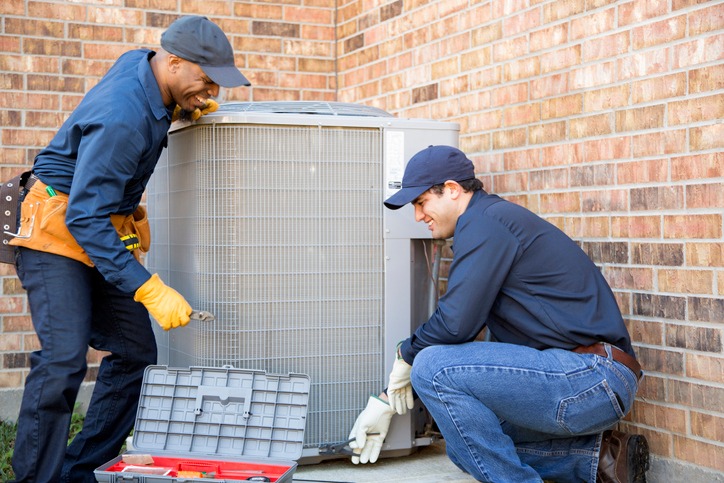
Neglecting proper air conditioner maintenance can lead to a number of issues with air quality in your home. Poor air quality can be caused by clogged air filters, which reduces the amount of air flow, leading to an increased level of dust, dirt, and other airborne particles that can adversely affect the environment. This can also cause a buildup of bacteria and mold, both of which can cause serious health problems. Investing in regular maintenance for your air conditioner is essential for ensuring good air quality in your home or business.
It’s easy to overlook the importance of proper air conditioner maintenance. But, neglecting it can have serious consequences on your energy bills. Without regular maintenance, your air conditioner has to work harder to maintain a comfortable temperature in your home, resulting in higher electricity bills. Your air conditioner needs to be kept clean and well lubricated to ensure that it is operating at peak efficiency. When filters get clogged, coils get dirty or evaporator fins become blocked, your air conditioner has to work harder, using more energy and costing you more money in the process. Regular maintenance ensures that your air conditioner is running at optimal efficiency, saving you money on energy costs in the long run.
Neglecting air conditioner maintenance can drastically reduce your system's lifespan. Without regular check-ups, the parts of your system can start to wear out faster than they normally would. These parts may need replacing sooner, resulting in a shorter lifespan for your AC unit. Regular maintenance also helps identify problems early on, so that you can take action before the damage becomes too severe. Don't let neglecting your AC maintenance result in an early replacement!
One of the most dangerous consequences of neglecting air conditioner maintenance is the increased chance of system breakdowns and emergencies. Without proper and regular maintenance, components can quickly become worn or malfunction, leading to unexpected breakdowns or even complete system failure. Having to repair or replace your air conditioning unit due to neglect can be an expensive and time-consuming process, costing hundreds or even thousands of dollars depending on the severity of the damage. On top of that, if you're dealing with a breakdown in the middle of a heatwave, you'll have to wait for a technician to be available before you can cool your home down again. To avoid having to deal with unexpected breakdowns and emergencies, it's important to stay on top of regular AC maintenance and inspections.
Neglecting air conditioner maintenance can have a number of serious consequences for your home. To protect yourself from these issues, ensure your AC unit is inspected, serviced, and cleaned regularly by our Peter Levi team of experts. Doing so will help improve your system's performance and efficiency while minimizing the risk of future breakdowns.
If your electrical bill has been steadily increasing, you might be wondering what is causing the sudden jump. Unfortunately, one of the most common culprits is your air conditioning system. From an inefficient compressor to a faulty thermostat, there are several things that can cause your electricity bill to skyrocket. In this blog post, we will explore four of the most common reasons why your A/C system could be the cause of your expensive electrical bill.
Are you noticing that your electricity bill is steadily increasing? There could be a few culprits behind the increase, and one of the most common causes could be that your air filter is dirty. A clogged air filter can lead to a variety of problems, including high electric bills. When your air filter is dirty, your HVAC system has to work harder to push air through the system. This increased workload results in your system running longer, which means more electricity is needed to power it. This extra energy use directly translates into an increased electricity bill.

Is your electric bill soaring despite having your air conditioner running the same amount? You might want to take a closer look at your air conditioner’s refrigerant levels. If you’re not sure what refrigerants are or how they work, don’t worry – it’s not as complicated as it sounds. Refrigerants are special types of fluids that absorb heat, allowing your AC unit to cool your home. When there isn’t enough of it, your air conditioner has to work harder and longer to reach the temperature you set on your thermostat. This causes your electric bills to rise and puts more stress on your AC system, leading to potential breakdowns. If you suspect low refrigerant levels, contact a qualified technician to inspect your AC unit and determine if a refill is necessary.

Your thermostat may not seem like it’s part of your air conditioning system, but a faulty one can still drive up your electric bills. A faulty thermostat can cause your air conditioner to run continuously and may also cause it to cycle too often, using too much energy. To avoid this, make sure you check the thermostat on a regular basis. Inspect it for wear or damages, and replace it if necessary. If you’re not comfortable doing this yourself, then contact an experienced technician who can help diagnose the issue and ensure that everything is running correctly.

When it comes to explaining why your electric bill is going up, one of the most common culprits is a lack of maintenance. A/C systems require regular maintenance to keep them running efficiently and safely. If you haven't had your system serviced in a while, chances are it's not running at its best. Regular maintenance checks can help identify potential issues before they become costly problems. This could include anything from a leaky gasket to clogged air filters or ducts. Your HVAC technician will be able to tell you if any components need to be replaced or serviced. They may also be able to suggest ways for you to reduce your energy usage, such as installing a programmable thermostat or switching to more efficient lighting.

Your air conditioning system is one of the biggest culprits behind skyrocketing electric bills. When your air filter is dirty, refrigerant levels are low, your thermostat is faulty or you lack proper maintenance, your A/C system can end up using a lot more energy than it should. Taking the time to regularly maintain your air conditioning system, replace the filter and keep an eye out for signs of faulty components can help reduce your electric bill by ensuring that your A/C system is running efficiently. Ready to give your system some TLC? Our Peter Levi team is here to TAKE CARE OF IT today!
While some people believe they should cover their HVAC system’s outdoor unit over the winter to protect it from the elements, doing so can cause more problems than it solves. For example, covering your outside AC unit can increase the risk of mold and rust developing in the system. So instead of covering your exterior unit, follow these top five maintenance tips to prepare your AC for the winter.
Before you perform any air conditioner maintenance, the first step you should take is to shut off your AC’s power. Turning off your AC power serves two purposes. First, it protects you from electrocution. Second, ensures your AC doesn’t accidentally turn on over the winter.
To turn off your AC safely, you’ll need to find the exterior power circuit. This unit is likely mounted on the side of your home. After you’ve found the circuit, open its cover and look for the switch that controls your AC unit’s power. Flip this switch to shut down your AC. Then, check your AC to make sure it’s stopped running before you perform any other maintenance.
While air conditioners are built to withstand harsh conditions, they can still be damaged. Since the winter can place more strain on your condenser and make any existing problems worse, it’s best practice to check your outdoor unit for signs of damage.
During your inspection, ensure your condenser’s seals are free from cracks and tightly secured, as loose or cracked seals can allow contaminants to get inside the condenser. You’ll also want to look for signs of cracks, leaks, or rust. If you notice any damage, contact an AC professional to provide AC system maintenance and repairs. By contacting a professional, you’ll prevent any issues from worsening during the winter.
Once you’ve checked your AC for damage, you’ll also want to clean it, as dirt and debris build-up could potentially damage it over the winter. When you start cleaning, remove any large pieces of debris, such as dead branches, on or around your unit. Next, use a broom to sweep away leaves and twigs on the condenser or close to it.
With the debris swept away, you can use a hose to spray off any dirt, bird droppings, or dust on the unit. Hosing down the unit will prevent dirt and other potentially damaging particles from corroding your AC’s frame. While cleaning the exterior portion of your condenser is usually safe, it’s best to leave the internal AC cleaning to the professionals. An internal cleaning from a professional will help avoid wear and tear on your system’s components and protect those components from accidental damage that can occur when someone isn’t properly trained.
When you want to keep your AC in good condition all winter long, it’s important to keep it clear of debris following your initial cleaning. During the winter, you’ll often see more debris in your yard, like pinecones, branches, and leaves.
Since debris can get inside and damage your unit, you’ll want to check it every couple of weeks and sweep any debris you notice on or around it. Additionally, snow and ice can add extra weight to your unit and potentially damage it, making it important to remove any snow or ice build-up you notice.
Though you can perform some maintenance yourself, a professional inspection from a trained HVAC technician is always worth the investment. A technician can perform a comprehensive inspection of your unit and ensure it’s ready to handle the demands of winter. Experts can spot issues you might never notice and fix them before they affect your system’s performance and health.
Besides inspecting your unit, an HVAC technician can also perform AC system maintenance and repairs for you. This maintenance keeps your system in great shape and lower the risk of damage to your system over the winter.
If you’re looking for air conditioner maintenance services near you in Northern California, Peter Levi can help. With an experienced team and a wide service area covering Novato and the surrounding areas, we’re prepared to serve any of your AC maintenance needs. When you sign up for air conditioner maintenance from Peter Levi, you can expect your air conditioner to last longer, suffer from fewer breakdowns, and provide greater performance. We also offer various coupons to ensure you get the best deal possible.
Learn more about our air conditioner maintenance services and annual maintenance plan. Please contact us to schedule an appointment today!
When your air conditioner is working correctly, it should never blow warm air. Warm air from your AC likely indicates a problem with the unit. It’s critical you have an HVAC technician inspect it as soon as possible. If you’re wondering if it’s time to call an HVAC tech, learn more about the five main reasons why your AC is blowing warm air and the leading solutions for each problem.
Your air conditioner could be blowing warm air due to thermostat issues, low refrigerant levels, frozen evaporator coils, or a variety of other problems. When you know the primary reasons why an AC might be blowing warm air, you can more quickly spot when your AC is having issues and take action before a problem spirals out of control. Review the five reasons why your AC might feel warm and how to solve them below:
Sometimes, an AC that isn’t blowing cool air is due to a malfunctioning thermostat or an improper setting. Before you spring for a full HVAC inspection, ensure your thermostat hasn’t been accidentally set to heat. If it’s not on its heating setting, your thermostat could be malfunctioning.
Typically, the chance of a thermostat issue being to blame is increased if the thermostat is older or hasn’t been calibrated correctly. You can always check your thermostat manual to ensure all your settings are correct. Still, you’ll probably need to contact an HVAC specialist to review your thermostat and the rest of your HVAC system to determine if the thermostat is to blame.
When your thermostat isn’t to blame, there’s a high chance low refrigerant levels are causing the warm air. Your AC’s refrigerant absorbs the humidity and heat in your air. If your AC doesn’t have enough refrigerant, it won’t be able to effectively remove heat from your air, resulting in warm airflow.
AC refrigerant circulates within a sealed system. While some components require regular maintenance, air conditioner refrigerant rarely needs service—unless there is a problem. In these cases, your AC is likely leaking refrigerant from a hole or crack.
Usually, you can tell your AC has low refrigerant if ice is building up in your exterior unit or if you can hear bubbling or hissing noises. Without quick service, the leaking refrigerant could damage your compressor motor. As a result, you must have an HVAC technician inspect your system, repair any leaks, and refill your refrigerant.
When your condenser coils work correctly, they’ll remove heat from your home’s air and transport it outdoors. However, these coils are in your outdoor condenser and can be exposed to the elements. Due to their location outdoors, grime, dirt, and other debris can sometimes accumulate on them, resulting in reduced heat transfer. Without proper heat transfer, your AC will start blowing warm air. The dirty coils can even put greater strain on your AC, causing early breakdowns.
To solve dirty condenser coils, a trained HVAC technician must turn off your condenser, open up your unit, and clean the coils. You can reduce the chance of your condenser coils getting dirty by regularly removing debris around the condenser and using a hose to wash off any dirt build-up.
Another reason your AC might be blowing warm air is frozen evaporator coils. Your evaporator coils contain your AC’s refrigerant and will help absorb heat from your air. Ice can build up on these coils when you have low refrigerant levels or when air can’t flow properly through your unit. Though the evaporator coils will be cold, they won’t be able to absorb warm air. In these cases, your AC will either blow warm air or no air at all.
Since frozen evaporator coils usually indicate a problem with your AC, you’ll need an HVAC technician to inspect your unit to find the source of the problem. Usually, dirty air filters or refrigerant levels will have caused the freezing, so an HVAC technician may need to repair or replace a filter before cleaning the evaporator coils.
Your AC’s air filters prevent dust and debris from entering your HVAC system. Over time, these filters will get clogged. If you don’t change them, air can't flow through your system easily, and your AC might blow warm air. Fortunately, solving a dirty air filter is easy!
You can simply swap out the old filter for a clean one that fits your system. To prevent dirty filters in the future, you might also want to sign up for a maintenance plan where an HVAC technician will regularly swap out your filters and inspect your system.
If you’re looking for AC repair, replacement, or maintenance services near you in Novato or the surrounding areas, Peter Levi has you covered. When your AC is blowing warm air, you can trust our HVAC technicians to thoroughly inspect your system, share our results with you, and provide any repairs your AC needs to start working again. We can also replace your AC with a more energy-efficient model if it’s damaged beyond repair or on its last legs. Additionally, we offer multiple coupons to ensure you receive the best deal possible on our services.
We welcome you to learn more about our air conditioning services to get started. Please contact us if you have any questions or want to schedule an appointment today!
NOVATO
24 Digital Dr STE 1
Novato, CA 94949
VACAVILLE
1021 Mason St, STE 11
Vacaville, CA 95688
Mon - Fri. 7am - 7:30pm
Sat. 7:30am - 4pm
Sun. 8am - 4:30pm
